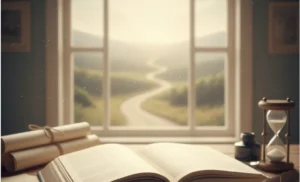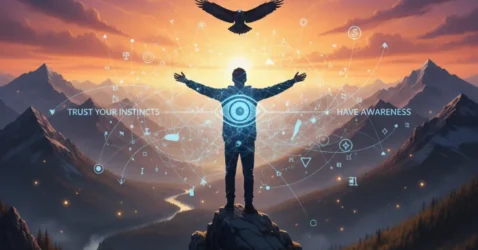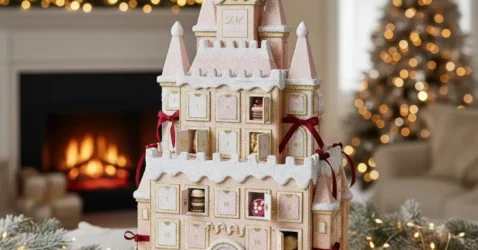Beyond the Crystal Ball: Unearthing the Surprising History and Little-Known Facts of Tarot Cards
For many, the image of tarot cards conjures a dramatic scene: a mystic figure draped in velvet, perhaps warning of an unexpected journey or a fated meeting. This popular, almost theatrical, perception has led many to believe that tarot is simply a tool for predicting an unchangeable future. The truth, however, is far more fascinating and grounded.
The very word, Taromancy, loosely translates to “looking for premonitions,” but the practice itself is much more about self-actualization and helping you manifest the destiny you are meant to be on. A reading can offer deep insights, not just into a potential future, but also into the underlying currents of the past and the present moment. Despite this focus on personal guidance, tarot often gets a bad rap, sometimes mistakenly associated with “black magic” or “the work of the devil.” The surprising origin of tarot, however, reveals a much more innocent, and even playful, beginning.
A Game, Not a Prophecy: The Unexpected History of Tarot
The history of tarot is perhaps its most surprising secret. It originated not as a tool for fortune-telling, but as a simple card game in 15th-century Europe called Tarocchi. It wasn’t until the 18th century that the cards began to be used in the context of divination and spiritual guidance.
In a truly stunning revelation, tarot was actually the first deck of cards ever invented. That’s right—the standard deck of playing cards we use today for games like poker and bridge was directly inspired by the tarot deck.
The journey from a game to a spiritual tool was solidified by a Frenchman named Jean Baptise Alliette. He is credited with publishing the first comprehensive guide to tarot card reading. Alliette gave the cards their modern, profound meanings, drawing heavily on natural elements and facts from astronomy. Crucially, he assigned a specific order to the cards that is largely maintained to this day.
The deck received a further significant update in 1909 from two figures: tarot reader A.E. Waite and William Rider. Their work explored how the scenes depicted on the cards—the very illustrations we often see—tell a cohesive story when placed together, adding a new layer of narrative depth to the reading process.
Intriguing Tarot Facts You Might Not Know
Beyond the history, there are many elements of the tarot deck itself and the reading process that remain mysterious to the uninitiated.
The Anatomy of the Deck
A complete deck of tarot cards consists of 78 cards, which are divided into two main sections, or Arcanas.
- The Major Arcana contains 22 cards. These cards represent the foundational journey toward self-enlightenment, often symbolizing major life themes, challenges, and milestones.
- The Minor Arcana has 56 cards, which are further split into four suits. These suits represent the more day-to-day aspects of life, with each one corresponding to a different elemental sign.
The four suits of the Minor Arcana, and what they represent, are:
- Wands (): Represents ambition, creativity, and career.
- Pentacles (): Represents money, home, and material security.
- Cups (): References our emotional self, intuition, and relationships.
- Swords (): Represents intellect, over-thinking, conflicts, and challenges.
Reading the Cards: Myths and Misconceptions
It’s a common misconception that you must be inherently “spiritual” to read tarot. In reality, the most crucial skills are knowledge and intuition. Digging deep into these realms will help you better interpret the cards and their shifting meanings.
A fascinating, and highly personal, application of tarot is finding your tarot birth card, which is aligned with the Major Arcana. To calculate it, you simply add up the digits of your full birth date. For example, if your birthday is 11/22/1990, you add . Then you add those digits: . Your birth card would be number 7 (The Chariot). Looking up its meaning can provide guidance for your life journey.
Another pervasive myth is the superstition that someone else must buy your first deck for you. This is simply nonsense; you can—and should—feel free to buy your own deck when you feel called to it.
The Nuance of Interpretation
The most important fact to grasp is that no cards in tarot are inherently “good” or “bad.” It is all about interpretation and, crucially, remembering that you always have free will. A card often perceived as negative, like the Devil, doesn’t mean you’re cursed; it might simply indicate underlying issues like greed, a sense of being chained to a bad habit, or a misuse of personal power. It can represent the end of one phase and the start of an entirely new beginning.
Tarot’s versatility extends beyond personal readings. It can be used for meditation—by simply choosing a card you are drawn to and imagining yourself stepping into its image to explore its energy. For those who engage in spell-casting, the cards are known to add an extra layer of focus or “oomph” to rituals.
In a pinch, you can even use a regular deck of 52 playing cards to read the tarot by simply transferring the knowledge of the Minor Arcana.
Ultimately, while tarot cards won’t help you with objective, scientific truths, they are an incredible tool for shedding light on your inner truth. They help many of us come to terms with personal struggles and provide a dynamic, reflective guide, proving that the meaning of divination cards is always evolving based on the era’s culture and the unique needs of the individual user.















